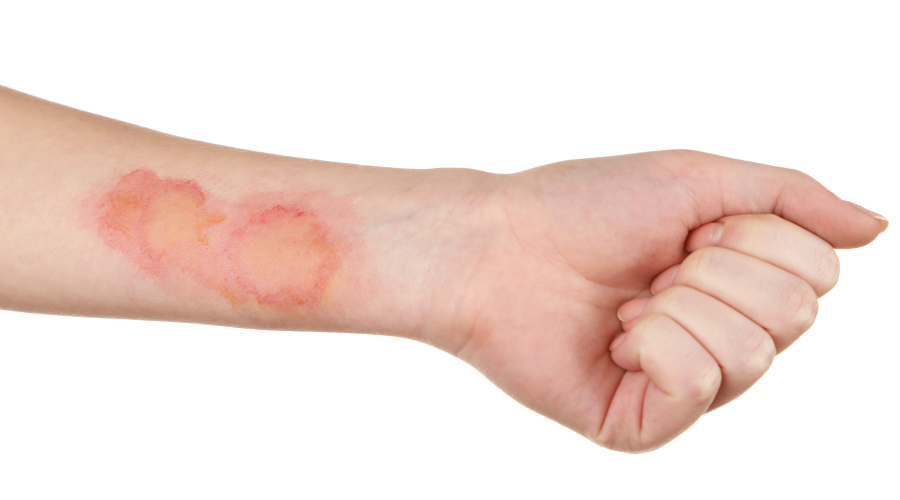Skin infection is a common condition that affects people of all ages. They occur when harmful microorganisms, such as bacteria, viruses, or fungi, invade the skin and cause inflammation or damage. Some common types of skin infections include bacterial infections like impetigo and cellulitis, viral infections like herpes and shingles, and fungal infections like athlete’s foot and ringworm.
Symptoms may include redness, swelling, pain, itching, and the formation of blisters or pustules. Proper hygiene, wound care, and avoiding contact with infected individuals or surfaces can help prevent skin infections. Treatment may include antibiotics, antivirals, or antifungal medications, depending on the type of infection. Read on to know more about types of skin infections and what to do if you are infected.
Types of Skin Infection
There are several types of skin infections, each caused by different types of microorganisms. Here are some common types of skin infections:
1. Bacterial Infection
Bacterial infection on skin is a common condition that occurs when harmful bacteria invade the skin and cause inflammation or damage. The symptoms of bacterial skin infections can vary depending on the type and severity of the infection. There are several types of bacterial skin infections, including:
- Impetigo: This is a highly contagious bacterial skin infection on face that often affects children. It causes itchy, red sores or blisters on the face, arms, and legs.
- Cellulitis: This is a serious bacterial infection that affects the deeper layers of the skin and can spread to the lymph nodes and bloodstream. It causes redness, swelling, and pain, and may also cause fever and chills.
- Folliculitis: This is an infection of the hair follicles, causing red, swollen bumps that may contain pus. It can occur anywhere on the body where hair grows.
- Boils and abscesses: These are infections that occur when bacteria enter the skin through a cut or wound and cause a painful, pus-filled lump.
- Necrotizing fasciitis: This is a rare but serious bacterial infection on skin that affects muscles and tissues beneath the skin. It can spread rapidly and cause tissue death, leading to amputation or even death.
- Hansen’s disease: Hansen’s disease, also known as leprosy, is a chronic bacterial infection caused by Mycobacterium leprae. It affects the skin, nerves, and respiratory tract, and can cause disfiguring skin lesions and nerve damage. It is treatable with antibiotics but can lead to permanent disability if left untreated.
2. Viral Skin Infections
Viral skin infections are caused by different types of viruses that infect the skin cells and cause various symptoms. Some common types of viral skin infections include:
- Shingles: Shingles, also known as herpes zoster, are caused by the reactivation of the varicella-zoster virus, which also causes chickenpox. It causes a painful, blistering rash that typically appears on one side of the body.
- Measles: Measles is a highly contagious viral infection that causes fever, cough, runny nose, and a distinctive rash. It is caused by the measles virus and can lead to serious complications such as pneumonia and encephalitis. Vaccination is the best way to prevent measles.
- Chickenpox: Chickenpox is caused by the varicella-zoster virus and is most common in children. It causes a rash of itchy, fluid-filled blisters that can appear anywhere on the body. Complications are rare but can include bacterial infections and pneumonia. Vaccination is recommended to prevent chickenpox.
- Molluscum contagiosum: Molluscum contagiosum is a viral skin infection that causes small, raised, wart-like bumps on the skin. It is caused by the Molluscum contagiosum virus and is most common in children. The bumps are usually painless and can disappear on their own, but may require treatment in some cases.
- Hand, foot, and mouth disease: Hand, foot, and mouth disease is a viral infection that is most common in children. It causes a fever, sore throat, and a rash of small, blister-like sores on the hands, feet, and mouth.
- Warts: Warts are caused by the human papillomavirus (HPV) and can appear anywhere on the body. They are raised, rough bumps that may be flesh-coloured or darker.
3. Fungal Skin Infection
Fungal skin infections are caused by different types of fungi that can grow on the skin, nails, or hair. Some common types of fungal skin infections include:
- Athlete’s foot: Athlete’s foot, also known as tinea pedis, is a fungal infection that typically affects the skin on the feet, causing itching, burning, and flaking. It can be spread through contact with contaminated surfaces, such as locker room floors.
- Ringworm: Ringworm, also known as tinea corporis, is a fungal infection that can affect the skin on the body, scalp, or nails. It causes a circular or ring-shaped rash that is often itchy and scaly. It can be spread through contact with contaminated surfaces or animals.
- Pityriasis Versicolor: Pityriasis versicolor is a fungal infection that affects the skin on the trunk and upper arms. It causes small, discoloured patches of skin that may be white, pink, or brown. It is more common in warm, humid climates.
4. Parasitic Skin Infection
Parasitic skin infections are caused by parasites that live on or in the skin. Some common types of parasitic skin infections include:
- Scabies: Scabies is caused by tiny mites that burrow into the skin and cause intense itching and a rash. It is highly contagious and can be spread through close contact.
- Lice: Head lice are small, wingless insects that live on the scalp and feed on human blood. They can cause itching and redness on the scalp and may be spread through contact with infested combs, brushes, or clothing.
Pubic lice, also known as “crabs,” are small insects that live in pubic hair and feed on human blood. They can cause itching and irritation in the pubic area and may be spread through sexual contact
- Bed Bugs: Bed bugs are similar to head lice but live on clothing and bedding rather than on the skin. They can cause intense itching and a rash and may be spread through contact with infested clothing or bedding.
Symptoms of Skin Infections
The symptoms of skin infection can vary depending on the type and severity of the infection. However, some common symptoms of skin infections include:
- Redness around the affected area is a common symptom of a skin infection.
- Swelling can occur with some skin infections, causing the skin to feel tender and hot to the touch.
- Pain or discomfort is a common symptom of a skin infection, especially when touching the affected area.
- Itching is a common symptom of fungal and parasitic skin infections, such as athlete’s foot or scabies.
- Blisters or pus-filled bumps may develop with a bacterial infection on skin, such as impetigo.
- Crusting or scaling may occur with some fungal skin infections, such as ringworm.
- Fever may occur with some skin infections, indicating a more serious or systemic infection.
Skin Infection Treatment
The skin infection treatment depends on the type and severity of the infection. Some of them, like viral skin infections, resolve on their own within a few days or weeks.
Mild bacterial skin infection treatment includes topical medications, such as creams or ointments, while more severe infections may require oral antibiotics or antifungal medications.
In some cases, where the bacterial strain does not respond to the treatment, intravenous antibiotics may be required.
OTC antifungal sprays can be used to treat fungal skin infections. If this does not help you can talk to a doctor for prescription medicines or creams.
For parasitic infections medicated creams applied topically may help. Otherwise, prescription medication like anti-inflammatory drugs can be procured by seeking medical attention.

















